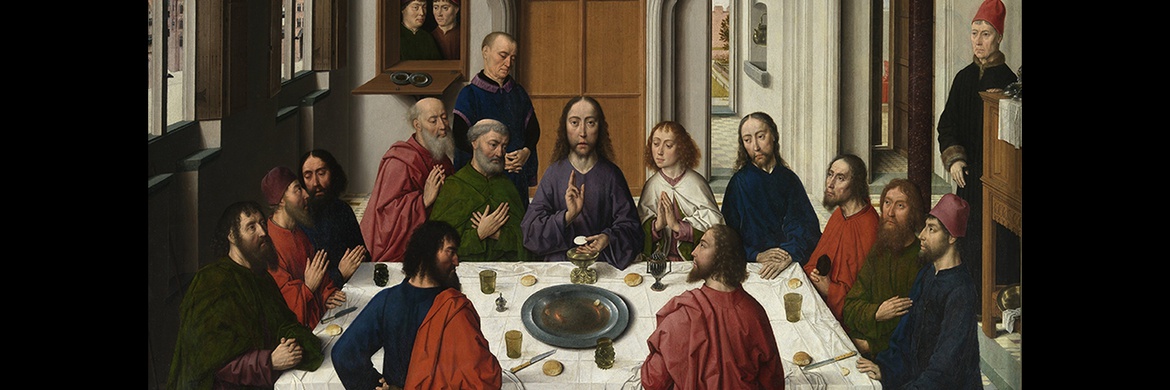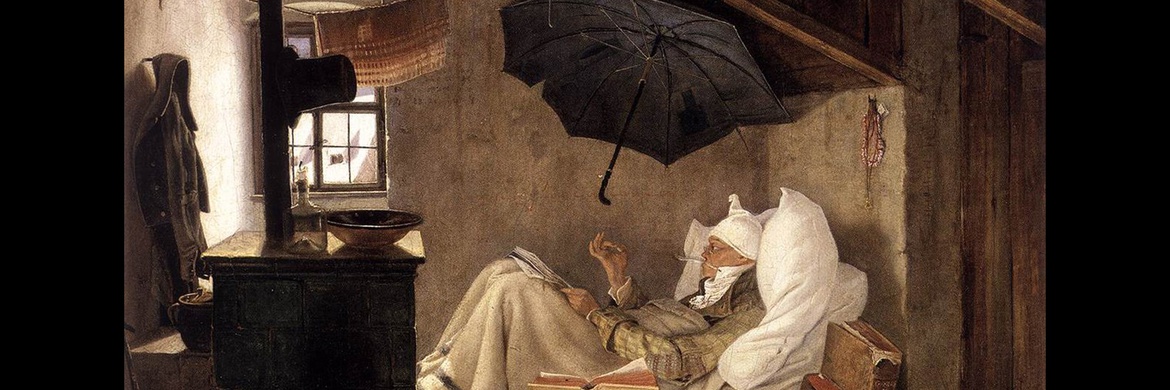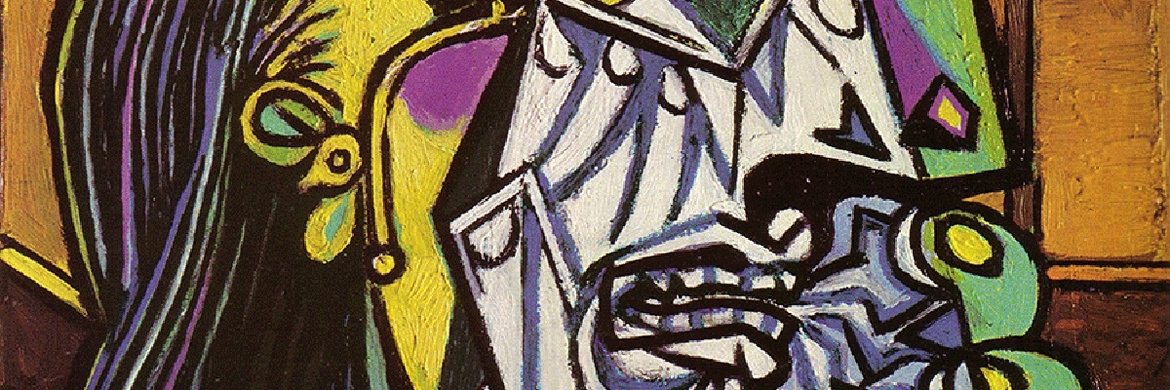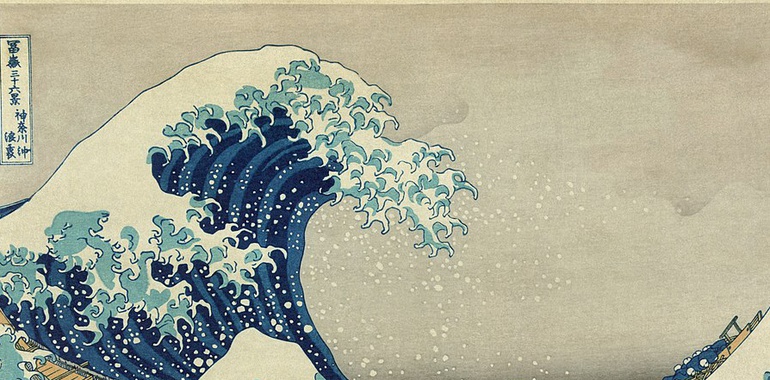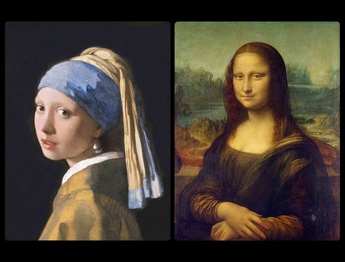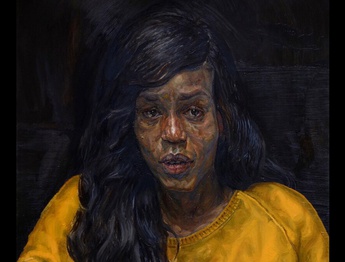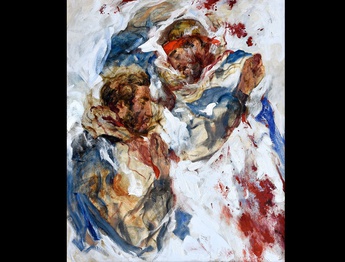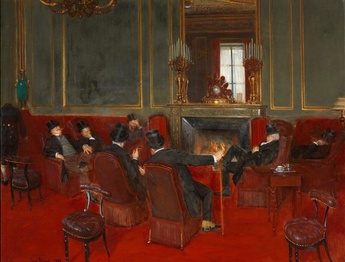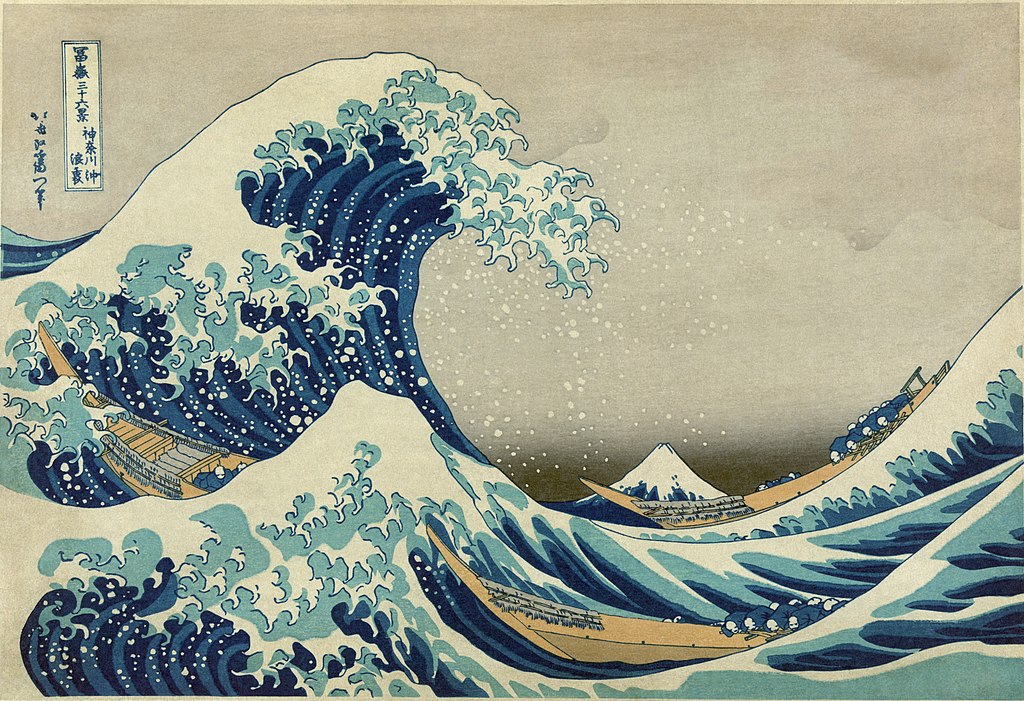
The Great Wave off Kanagawa/ Katsushika Hokusai/color woodblock/1831
The Great Wave off Kanagawaalso known as The Great Wave or The Wave, is a woodblock print by the Japanese ukiyo-e artist Hokusai. It was published sometime between 1829 and 1833 in the late Edo period as the first print in Hokusai's series Thirty-six Views of Mount Fuji. The image depicts an enormous wave threatening three boats off the coast in the Sagami Bay (Kanagawa Prefecture) while Mount Fuji rises in the background. Sometimes assumed to be a tsunami, the wave is more likely to be a large rogue wave.
It is Hokusai's most famous work and is often considered the most recognizable work of Japanese art in the world.
His Thirty-six Views of Mount Fuji, from which The Great Wave comes, was produced from c. 1830 when Hokusai was around seventy years old. The series is considered his masterpiece. It made use of the recently introduced Prussian blue pigment; at first, the images were largely printed in blue tones (aizuri-e), including the key-blocks for the outlines. After its success was assured, multicolored versions of the prints were released.
Ukiyo-e is a genre of Japanese art which flourished from the 17th through 19th centuries. Its artists produced woodblock prints and paintings of such subjects as female beauties; kabuki actors and sumo wrestlers; scenes from history and folk tales; travel scenes and landscapes; flora and fauna; and erotica. The term ukiyo-e translates as "picture of the floating world".
Prepared and arranged by: Narges Saheb Ekhtiari
